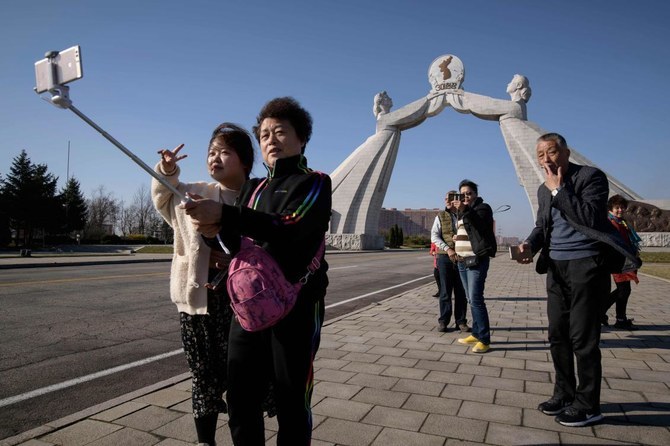How Saudi Arabia can get mileage out of Chinese tourists

https://arab.news/9npeq
China is not only the biggest travel market in the world but also one of the biggest spenders globally.
At its peak in 2019, China had an estimated 155 million tourists traveling abroad, three times as many as it had in 2010, and they were spending $255 billion abroad.
The temporary slowdown during the pandemic meant only 32 million tourists out of China in 2021 — a staggering 80 percent drop from the peak.
In addition, rolling lockdowns and stringent quarantine rules for returning passengers have meant outbound Chinese tourism will likely remain subdued in 2022.
However, the lockdowns will eventually end, and the Chinese tourists will return to their travel habits just like what we have seen in Europe, US and other developed markets where travel is back with a vengeance.
When Saudi Arabia opened itself to international tourism in 2019, China topped the number of tourist visas issued. Still, the thousands of Chinese travelers who visited the Kingdom in 2019 is only a tiny fraction compared to the massive potential of millions of Chinese visitors the Kingdom aims to attract in the coming years. While not fully opened yet, China has reduced quarantine times for inbound travelers by half this week, which is a significant step in the right direction.
When outbound tourism fully recovers from the pandemic-induced lull in 2023, there is no doubt that Chinese travelers will exercise their freedom with gusto, making them a critical target market for the Kingdom to achieve its 100 million visitors goal of Vision 2030.
Like their Western counterparts, Chinese tourists demand seamless luxury and branded experiences. However, one of the defining and distinct differences between a Chinese tourist and a Western tourist is age.
The wealthy Western traveler with high disposable income is typically older, between 45-55 years, with young kids. They earn 20-30 percent more than the younger cohorts aged between 25 and 35.
The wealthy Chinese traveler is the reverse. The 400 million-strong Chinese millennial or Gen Z cohort is aged between 25 and 35 and is 20 percent richer than their older counterparts.
This has significant implications for a destination.
While the current offering of a barefoot luxury and relaxation experience is great for Western tourists, the impression needs to be more holistic to attract young Chinese tourists.
Most marketing campaigns targeted at the Western audience focus on young kids having a good time while their parents relax in the sun; it is also what most destinations try to deliver. This idea, unfortunately, does not appeal to the mobile, active, young Chinese millennial.
Destinations need to think proactively about customizing their offerings for this segment as Chinese millennials clearly prefer to visit several destinations rather than stay in one location. Their idea of travel is to have an adventure with a sense of fun; they are looking for activities, and shopping is a non-negotiable element of that travel experience.
Unlike the Western mother who brings the kids for a holiday, the successful Chinese daughter gets her mother for a vacation. The older Chinese mother is less fluent in English and is more likely to want to eat her local cuisine.
A welcoming destination today must cater to her choices for it to be appealing to the daughter to bring her mum there. It must deliver an emotional experience to show you care about what’s important to them. And suppose the destinations can build meaningful relationships and take the brand experience to an elevated dimension.
In that case, the age profile of these customers means a much higher customer lifetime value and also that they are yours for at least the next two decades, during this time, when they will keep returning first with their parents and eventually their children.
The natural assets in the Kingdom have much to charm the Chinese tourists, from city to desert to the beach, and there’s no doubt that the new destinations will conjure incredible experiences for the visitors.
However, Chinese millennials have divergent consumer patterns from Western source markets. The Kingdom needs to capture the interest of this Gen Z and millennial Chinese market. This will not dilute the experience but enhance it in the long run for all tourists.
• Aradhana Khowala is a global authority on the luxury travel and tourism industries having worked across 75 countries. She is currently the chair of the global advisory board of The Red Sea Development Company.









































